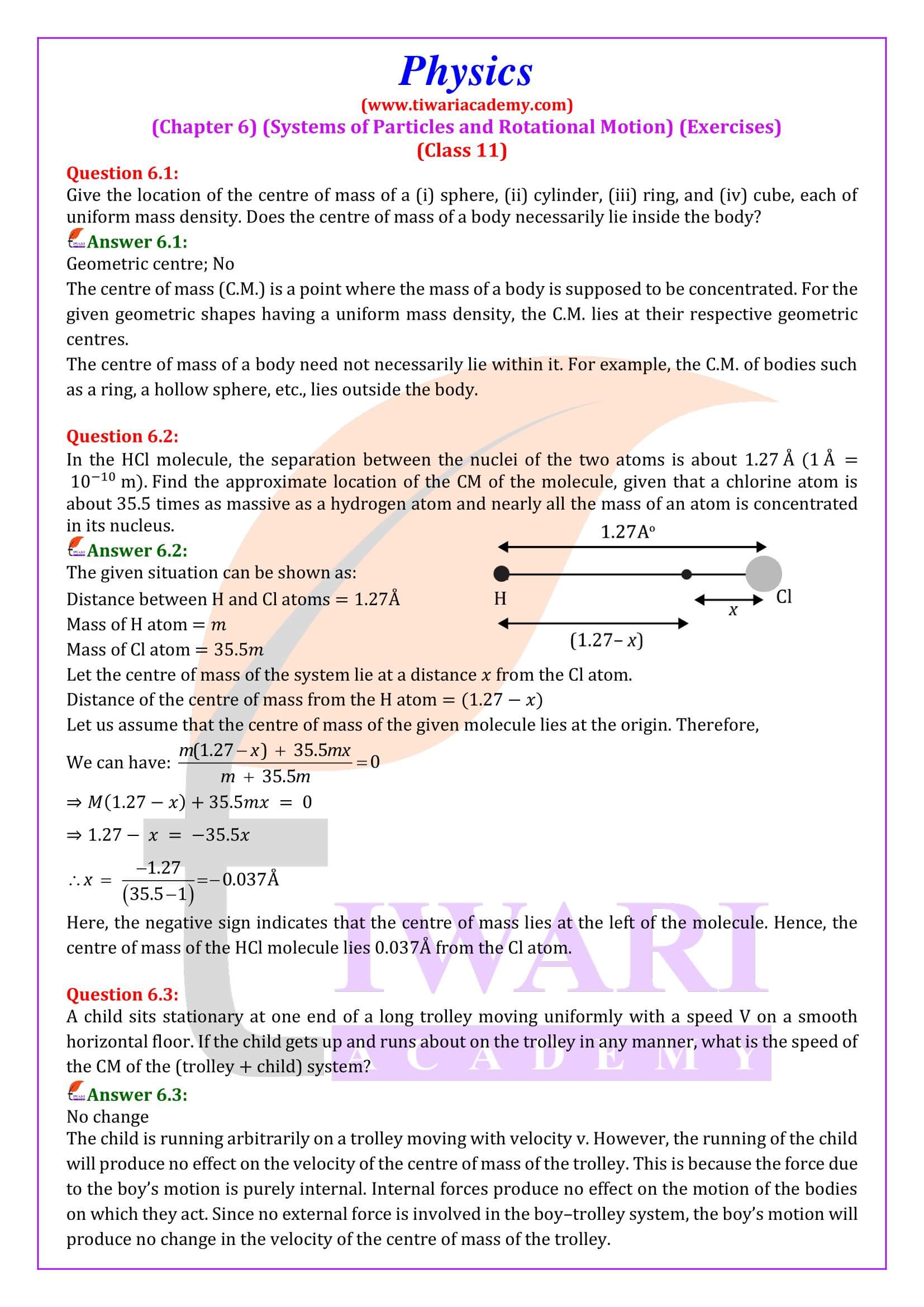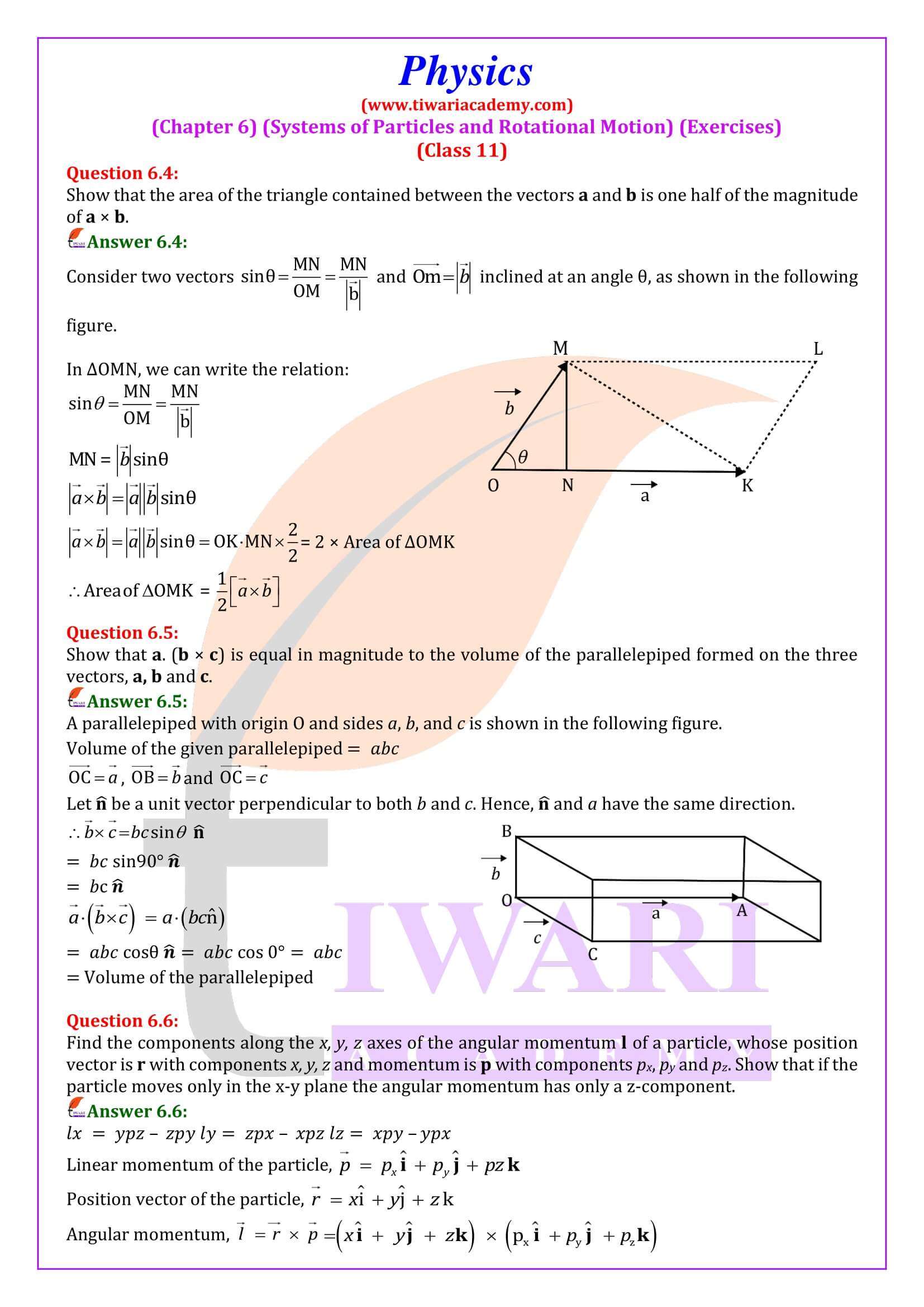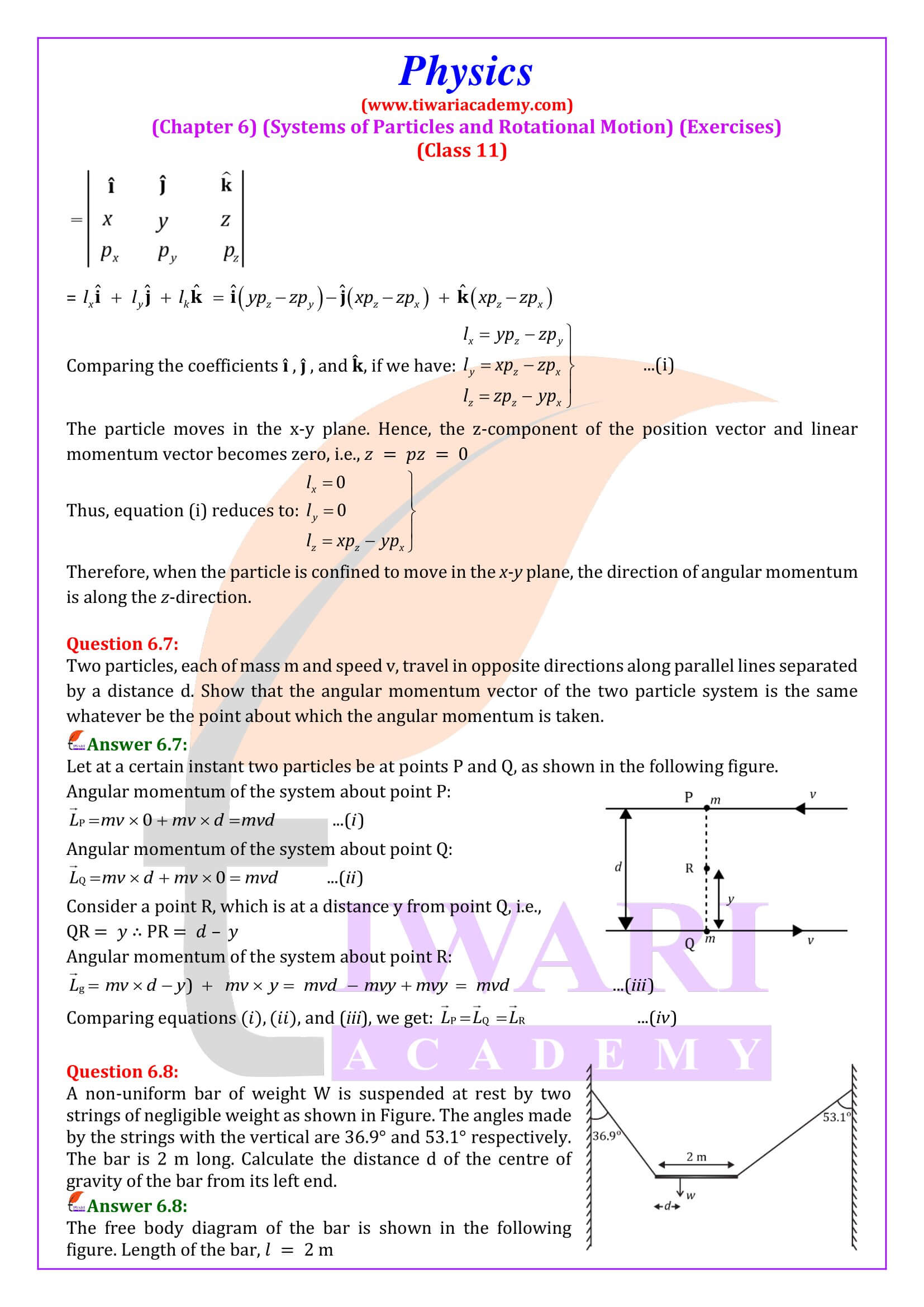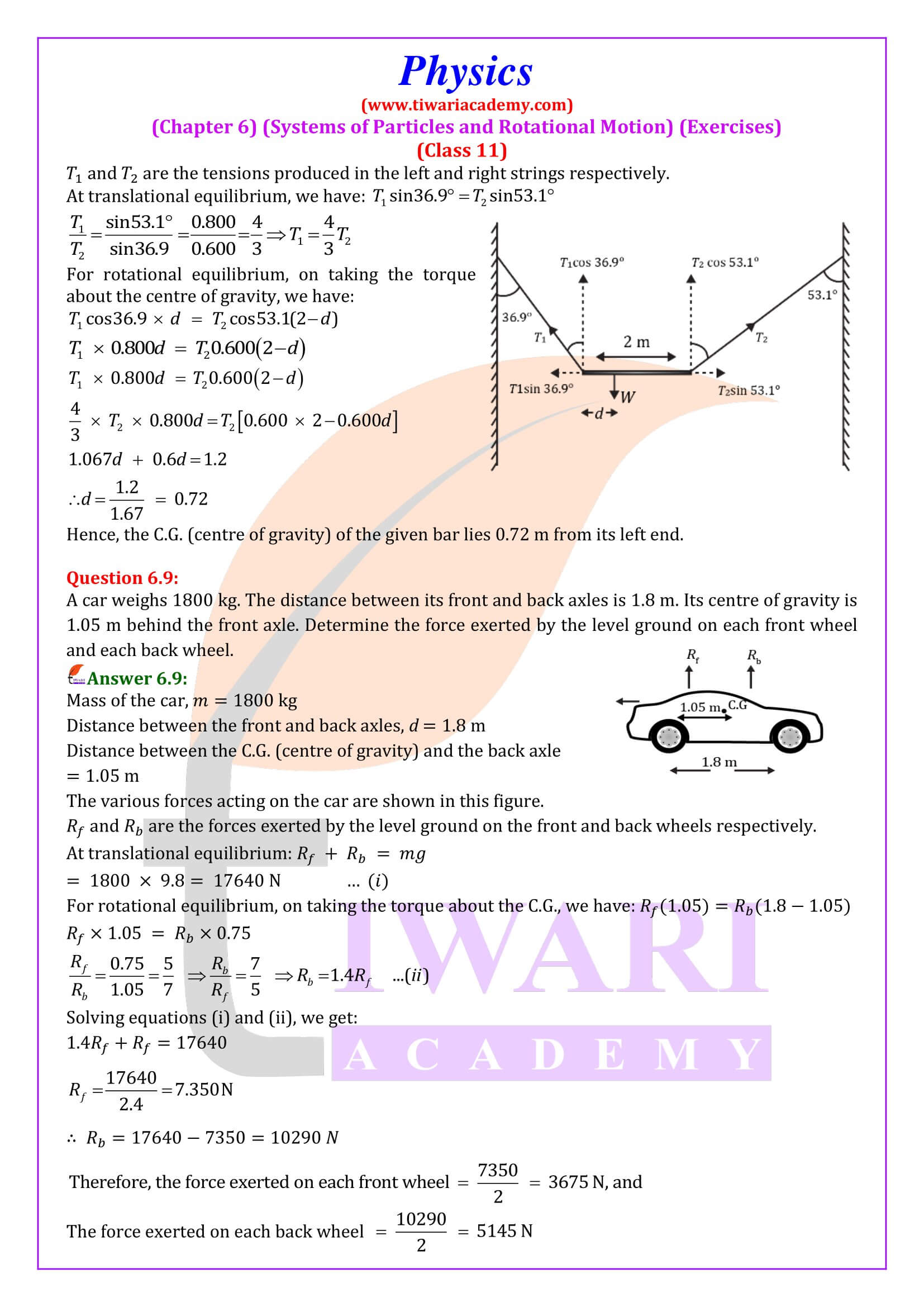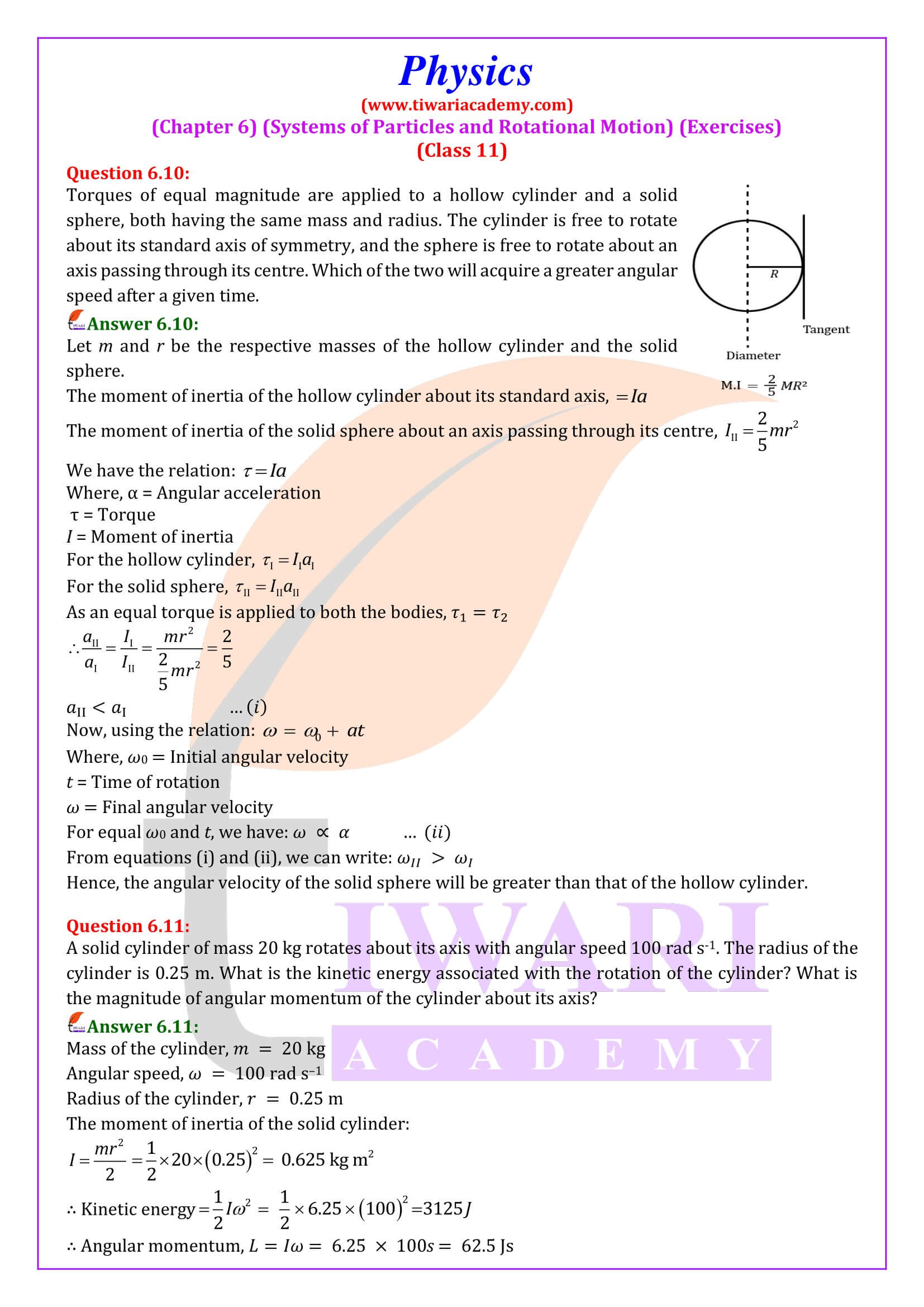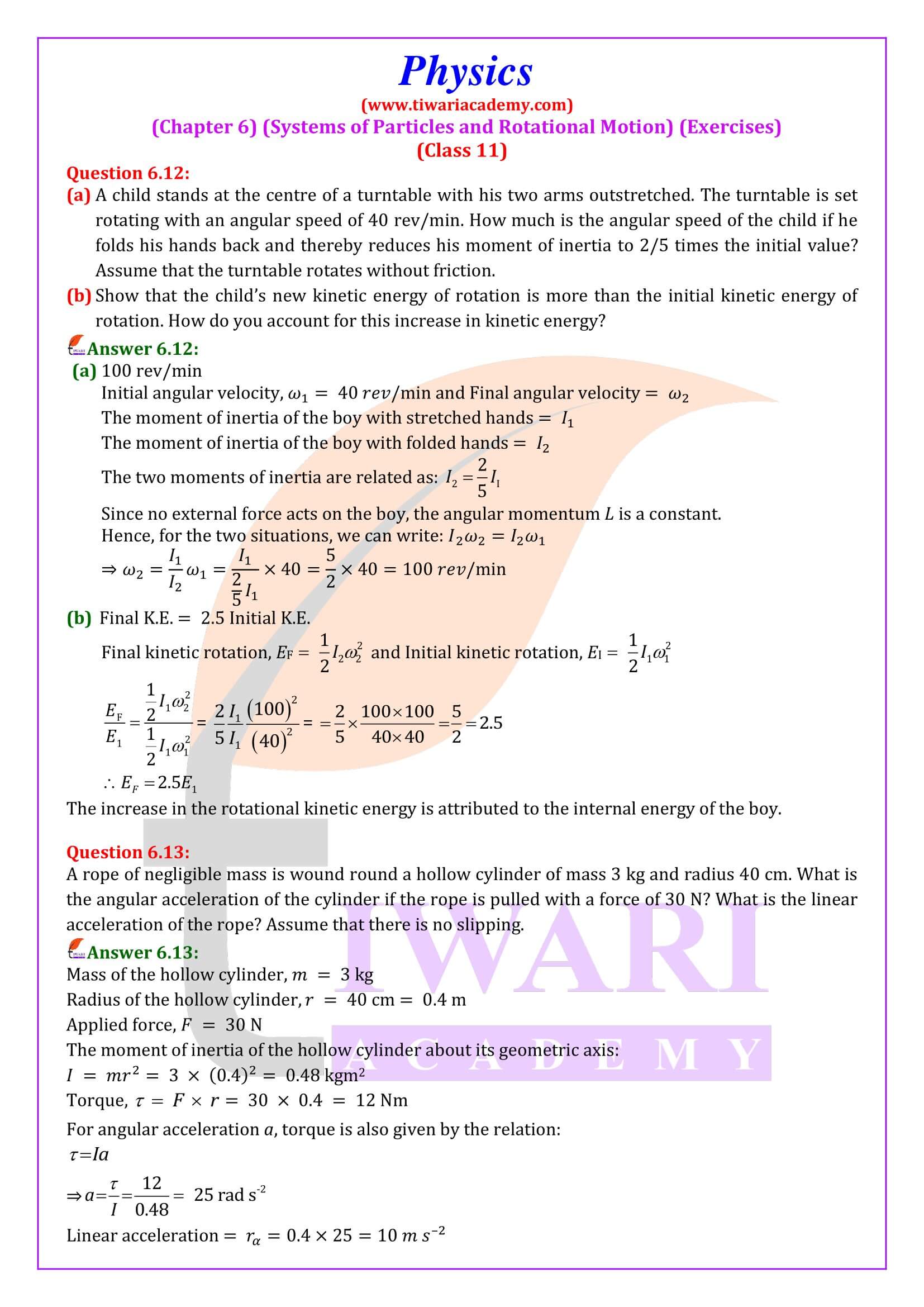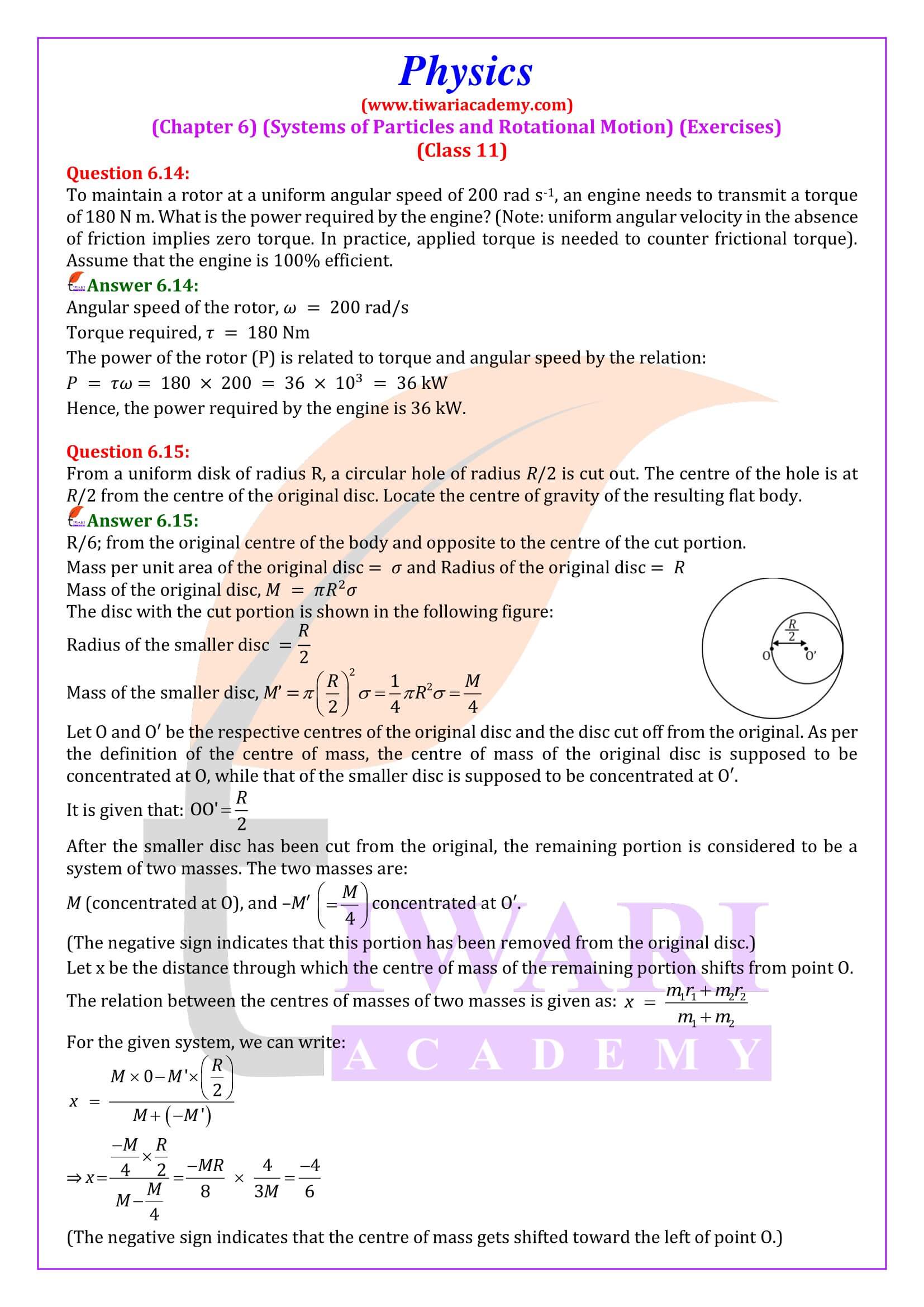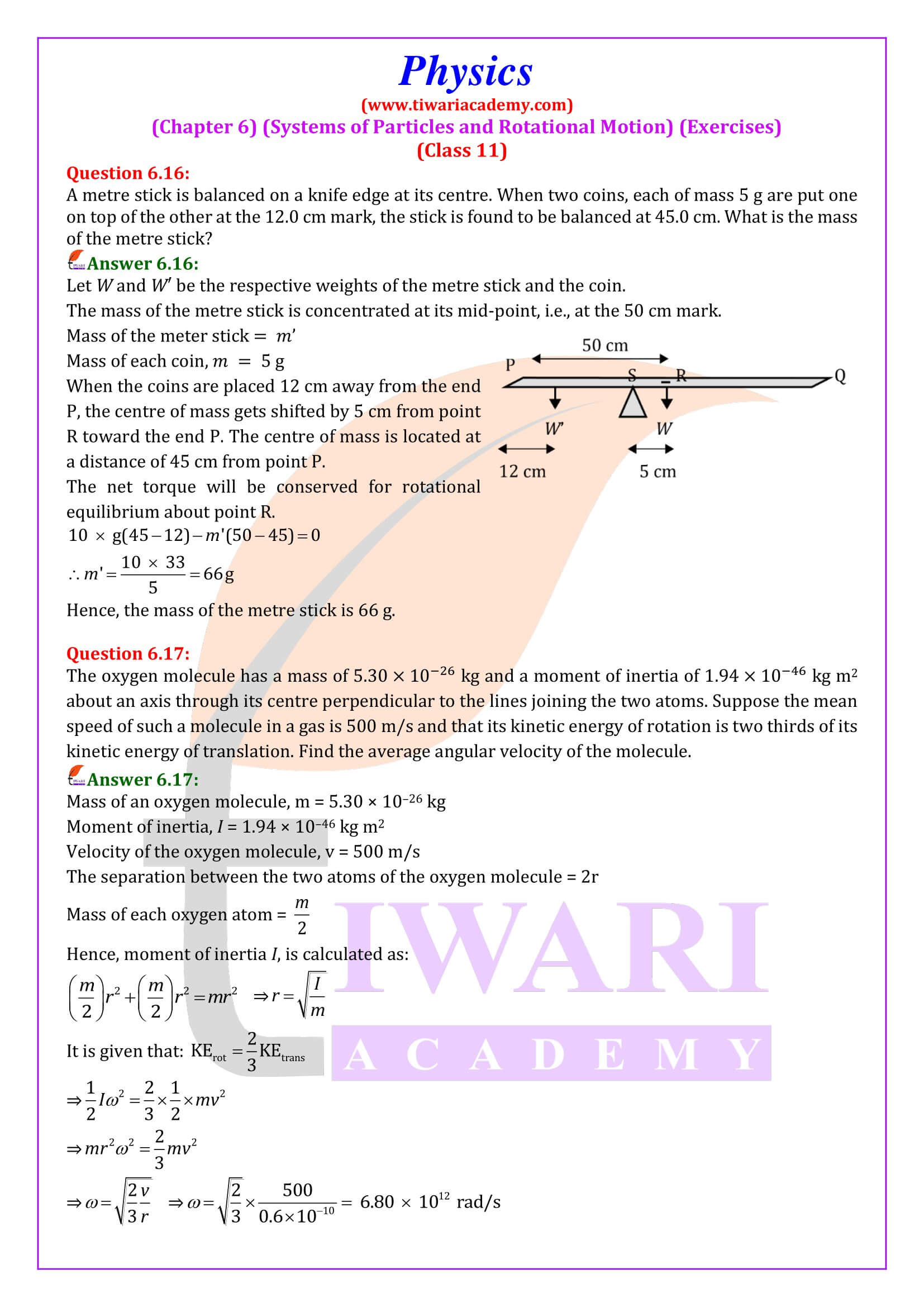NCERT Solutions for Class 11 Physics Chapter 6 System of Particles and Rotational Motion in Hindi and English Medium designed for academic session 2024-25 along with MCQ Extra questions. Solve the practice exercises, examples, and end-of-chapter questions provided in the NCERT textbook. Pay attention to the step-by-step solutions provided in the textbook or use NCERT solutions available online.
Class 11 Physics Chapter 6 System of Particles Rotational Motion Question Answers
Class 11 Physics Chapter 6 MCQ
For increasing the angular velocity of an object by 10% the kinetic energy has been increased
A particle moves for 20s with velocity 3m/s and then moves with velocity 4m/s for another 20s and finally moves with velocity 5m/s for next 20s. What is the average velocity of the particle?
A dancer on ice spins faster when she folds here arms. This is due to
Which is the wrong relation from the following?
Centroid motion in 11th Physics Chapter 6
The center of mass is an important property of any rigid body system. The center of gravity represents such a point. As a rule, mechanical systems move in short or rotating motions. In this case, the center of mass also moves and gains speed and acceleration. Let’s see in detail how these metrics are calculated for such a system. If you assume that the mass of an object is at a certain point, you can simplify much of the problem. If the correct location is chosen, the force and motion equations behave the same as they would when applied when the mass is dispersed. This particular location is called the center of gravity. Its position is defined relative to the object or system of objects whose centroid is to be calculated.
Usually for uniform shapes this is their centroid. For symmetrical and uniform shapes, their centers of gravity are located at their centers of gravity. For a ring, its center of mass is inside the ring, which means that an object’s center of mass need not be in the object itself. Consider a multi-particle system. Each part of the system moves at a different speed. Consider a particle system composed of m1, m2, m3, etc. The initial positive vectors of these particles are r1, r2, r3, now these particles start from their positive vector direction, the goal is to find the velocity and direction of velocity at the center of mass of the system.
Class 11 Physics Chapter 6 Multiple Choice Questions
A hollow cylinder and a solid cylinder having different mass diameter are released from rest simultaneously from the of an inclined plane. Which will reach the bottom first?
A particle moves on a circular path with decreasing speed. Choose the correct statement.
A solid sphere is rotating in free space. If the radius of the sphere is increased keeping mass same, which one of the following will not be affected?
If a body is rotating about an axis, passing through its centre of mass then its angular momentum is directed along its
Class 11 Physics Chapter 6 Topic – Moment of inertia
The motion of an object can be of different types, such as linear motion, circular motion, and rotational motion. According to Newton’s first law of motion, if an object is at rest, it will remain at rest, and if it is in motion, it will remain in motion unless an external force is applied to it. All this is due to the inertia of the body. Linear motion has inertia and rotational motion has a moment of inertia.
Just like linear motion has inertia, rotational motion also has a moment of inertia. This the Newton’s law of motion that a stationary object will stay at rest, while a moving object will keep moving along of a straight line at the same speed, unless an external force acts on it. An object cannot automatically change its potion, but when an external force acts on this object to change its position, this object will oppose it. This tendency of the object is called its inertia. Therefore, a rotating object resists an external moment applied to change its rotational state, a tendency known as the moment of inertia. It is a scalar quantity.
Chapter 6 topic for 11th Physics – Rolling motion
A rigid body is a rigid body with a precisely defined and unchanging shape. The distance between all pairs of particles in an object like this remains the same. Since solid bodies bend under the influence of forces, this definition of rigid body indicates that no solid body is truly rigid. However, in many cases, the deformation is negligible. On the other hand, we can ignore the fact that objects such as wheels, roofs, steel beams, molecules and planets bend (twist), bend or vibrate in various environments and treat them as solids. Rolling is one of the most practiced sports in everyday life. All wheels used in vehicles such as cars, buses, trains, planes, bicycles, buffalo carts, etc. have a rolling motion, and many things have wheels attached like carts.
For clarity, let’s start with a disk as an example, but the results apply to any rolling body rolling on a horizontal surface. Assume the disc does not slip while scrolling. This means that the bottom of the disc in contact with the flat surface is stationary on the surface at a given instant. Rolling motion contains both motions, or it is a combination of translational and rotational motions. The translational motion of an object is the motion of the center of mass. In the rolling motion of an object, the surfaces in contact are slightly deformed. This deformation is temporary, that is, when the surfaces of the two objects touch, the body is temporarily deformed.
How does the Chapter 6 of 11th Physics explain about the center of gravity and center of mass?
As per class 11 Physics chapter 6, the center of gravity is the point where the weight of the whole body is said to be concentrated. We can say that it is the point where the resultant gravitational force on all particles of an object acts. The center of mass is the point where all body mass should be concentrated. The point is said to describe the motion of the object in the form of particles.
What is the importance of a Rigid Body concept in Class 11 Physics Chapter 6?
The rigid body concept is important to understand position of an object. It can be defined as an object in which the distance between all molecules remains constant under the influence of any external force. It remains fixed at rest and does not change shape during motion also. Students can get answers to simple questions online on Tiwari Academy. Expert academicians provide important questions and answers for all chapters free of cost. Tiwari Academy is a learning platform suitable for children of all grades as they can download solutions for all subjects.
What are the important definitions to remember from Chapter 6 Class 11 Physics?
Class 11 Physics Chapter 6 is an important chapter from the examination point of view. The chapter on Particle Systems and Rotational Motion includes many important definitions to help students do well in Grade 11 Physics. NCERT Solutions Class 11 Physics Chapter 6 helps students understand the concepts correctly and clear all the doubts in exercises and additional exercises questions. Here they can find all important questions and definitions to prepare for their exam.
